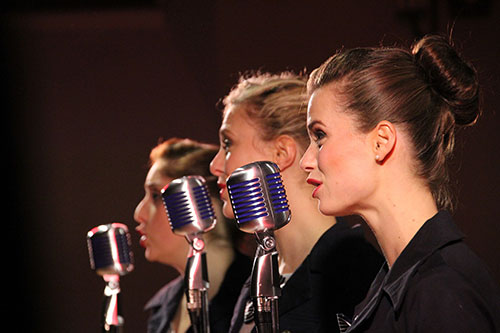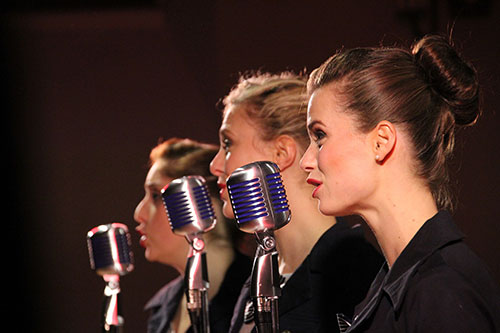Even novices in audio recognize that vibrations of one kind or another are at the root of all sound, and that the frequencies of the vibrations must occur somewhere between 20 Hz and 20,000 Hz in order for humans to hear them through the air as “sound.”

But what is less well understood are the actual frequency ranges of some of the most familiar sounds that each of us hears every day—specifically, men’s and women’s voices, and those of children.

Most of us think that male or female speech or singing voices fall somewhere in the midrange; “midrange vocals” is a recurring phrase commonly seen in speaker reviews, and I’m guilty of using it as well. However, a little research shows that the fundamental frequencies of male and female speech are really much lower in frequency than most of us imagine.
The average man’s speaking voice, for example, typically has a fundamental frequency between 85 Hz and 155 Hz. A woman’s speech range is about 165 Hz to 255 Hz, and a child’s voice typically ranges from 250 Hz to 300 Hz and higher. Of course, each of us has a wider range of sounds that our vocal cords can produce, and if we choose to sing, that range can extend up to four octaves. To help you visualize that, a standard piano keyboard has 88 black and white keys, and covers a frequency range from 27.5 Hz to 4186 Hz, over seven musical octaves (“middle C” is at 261 Hz). One octave represents 12 tones, white and black keys included. We hear the frequency of speech or singing as the pitch, and a doubling of the fundamental frequency represents an octave. If you were singing a note at 100 Hz and then sang it at 200 Hz, you’d hear it as “twice as high.” If you sang a note at 180 Hz and then tried for a really low note, at 90 Hz, the latter would be an octave deeper.
But what’s surprising in all this is that the entire range of men’s and women’s voices remains between about 65 Hz for a male with a very deep bass voice to the highest note of a female coloratura soprano, just above 1,000 Hz, at 1,280 Hz. (A female high-pitched scream can go quite a bit higher, to around 3,000 Hz.)
In loudspeaker terms, looking at a good 2-way speaker like Axiom’s M2 or M3 or M22, that means that the entire range of men’s and women’s singing voices are handled by the woofer before the tweeter even kicks in! Of course there are harmonics of our speech and singing voices that extend higher and give each of us the particular timbre or tonal quality—the harmonic structure– by which we recognize each other’s unique voices, but it still comes as a surprise that the woofer in many speakers, or the woofer and the midrange driver in a 3-way speaker, must handle the full range of human voices, spoken and sung.
This puts an enormous obligation on the speaker designer to make certain that a speaker’s accuracy in the range of the woofer be very linear and smooth, because we’ll certainly use our familiarity with men’s and women’s voices as a criterion of how natural a loudspeaker sounds. If a speaker has a choppy, uneven frequency response in the woofer or woofer/midrange, you can bet it won’t sound natural on spoken or sung male or female voices. Or if a speaker has a big hump or peak between 80 and 150 Hz, it will make male speech and singers sound peculiar—rather chubby or “fat” (a not uncommon design flaw in many speakers). But keeping things linear and smooth throughout that range to 1 kHz, means that the loudspeaker will sound natural on that most familiar of all sounds, men’s and women’s voices (and kids, too).






